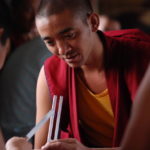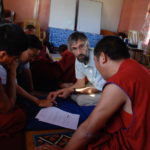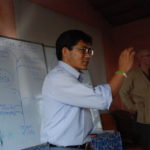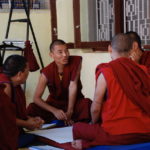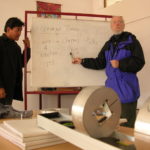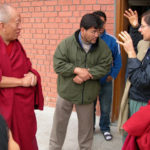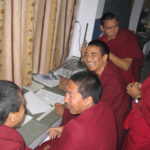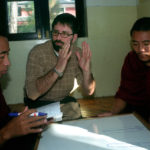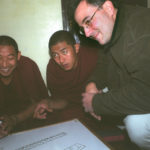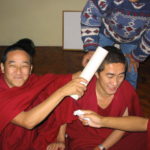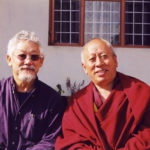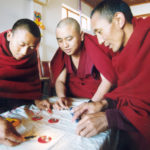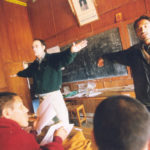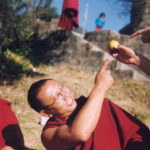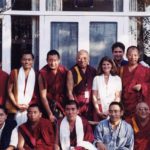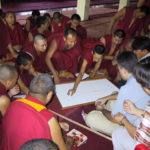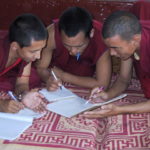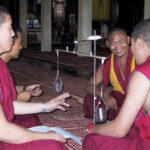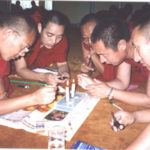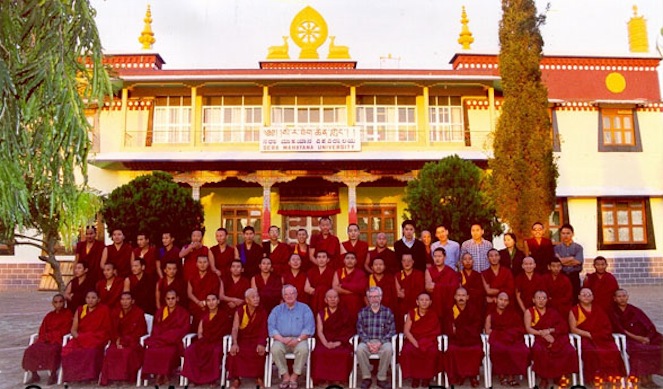
Our story begins in 1999 when His Holiness the Dalai Lama instructed Achok Rinpoche, the former director of the Library of Tibetan Works & Archives (Tibetan Library) to launch an initiative to introduce science to the “three major seats,” to scholarly monks at the three great monasteries of Gaden, Drepung, and Sera. In the first year of the project, the Tibetan Library set up a team of three translators to translate the first educational scientific writings into Tibetan, and at the same time planned a 4-week science course for a select group of scholarly monks.
The Library of Tibetan Works & Archives (Tibetan Library) monastic science initiative began in 1999 through the instruction of His Holiness the Dalai Lama View to former director, Achok Rinpoche. Although the Tibetan Library had almost no expertise in science at the time, their capacity as a center of learning serving all the major Tibetan Buddhist traditions was well suited for launching the initiative.
In the first year of the project, the Tibetan Library set-up a team of 3 translators to translate various educational scientific writing into Tibetan and at the same time planed a 4-week science course for a select group of scholarly monks. In 2000, a group of 50 monk scholars with a deep understanding of Buddhist philosophy were selected to participate in the first 4-week science workshop.
Science Workshops (2000 – 2007)
In 2001, the Sager Family Foundation created a partnership with the Tibetan Library to grow and sustain the Library’s historic undertaking. The Science Workshops (2000-2007) were an historic program and represent the first formal teachings of science within the history of Tibetan Buddhism. Overcoming a multitude of challenges of finding qualified teachers, translators and the daunting but vital task of coordinating participants from several monasteries and teachers from around the world, nine 4-week intensive science workshops were successfully implemented between 2000 and 2007.
In 2006, Geshe Lhakdor became the director of the Tibetan Library, and initiated efforts to grow the science programs and establish a dedicated “Science Department” at the Tibetan Library in Dharamsala.
Sager Science Leadership (2008 – present)
In 2008, we launched a new initiative to focus on supporting monks and nuns that can contribute to indigenous science learning and community engagement activities that connect Buddhism and science. The Sager Science Leadership Institute graduated its first cohort in 2010, a second cohort in 2013, and a third cohort in 2019.
During these three cohorts we developed relationships with faculty and a few institutions that have become critical friends and partners in our work, including the Exploratorium’s Teacher Institute, the National Writing Project, and the Smithsonian Institution.
Monastic Graduates Course & Dialogue (2011 – 2018)
Responding to a request from the Dalai Lama, we launched a program to reach senior monks and nuns that had graduated from their formal monastic studies and were now educational leaders, administrators and community mentors. Central to the monasteries’ ability to adapt and nurture new generations of monks learning science was reaching the senior monks that guided and oversaw traditional studies. A 4-week introductory science course, representing the best topics and activities and faculty, was developed. This course evolved and expanded as it was taught seven times.
Bhutan Science Leadership (2016 – present)
For three years, from 2016 to 2018, we organized an annual 10-day exploratory science workshop in Bhutan. These workshops gave a hands-on introduction to science for monastics from across the country and positioned us to launch a new leadership initiative in 2019.
Science Leadership for Nuns (2017 – present)
In 2017, our monastic graduates course was tailored to reach a group of nuns that were highly advanced in their Buddhist studies. This course led to the launch of a new initiative dedicated to nuns. We organized our first science workshop for nuns at Kopan Nunnery in 2018. In 2019, we launched a first all-nuns leadership cohort, for 33 nuns from 5 different nunneries.

